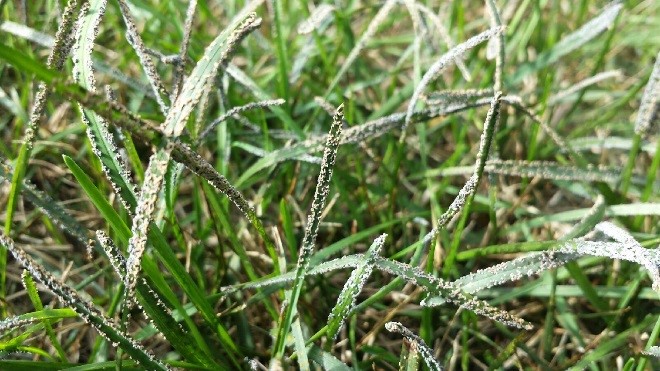Home /
Learn /
Blogs /
Slime Molds: Should You Be Concerned?
Slime Molds: Should You Be Concerned?

Many parts of the country are dealing with hot, humid weather and an abundance of rain. This type of weather is conducive to the development of a disease called slime molds that causes a great deal of concern, but is really nothing to worry about.
They can occur anytime from spring through fall, but seem to be more active following heavy rains in the summer. They can develop on any grass plants, including grassy weeds.
Slime molds are saprophytes, or primitive organisms that obtain their nutrients from dead or decaying organic matter. They use the grass blades for support for their spore production and do not directly affect the plant. The organism produces small fruiting bodies on the leaf surface that grow out perpendicular from the blades.
These fruiting bodies start out about the size of a pin head, but grow larger as more spores are produced and are now more noticeable. The fruiting bodies range in color from dark blue, to purple to gray. They can develop in patches from a couple inches to several feet wide. When touched, the spores can send out a small “puff” of spores, which can cause concern to many homeowners who happen upon these unusual patches.

What do you do when you find Slime Molds growing in your lawn?
Let nature take its course, action is not necessary. The fruiting bodies will dry out and fall off the grass blades. Normal mowing will also dislodge many of these fruiting bodies as well. If it is a cause of anxiety, you can take a hose and wash them off or use a broom and sweep them off the grass blades.
Remember, the spores from this year’s growth will end up in the thatch and could develop again the following year in the same location. If you think about it, it is a good thing as it is a sign that your lawn has plenty of microbial activity feeding away at your thatch layer.
If you have concerns about slime mold growing on your lawn, contact your local Spring-Green for more information.


